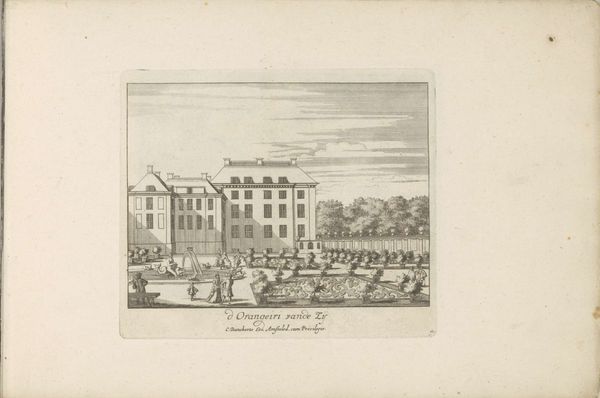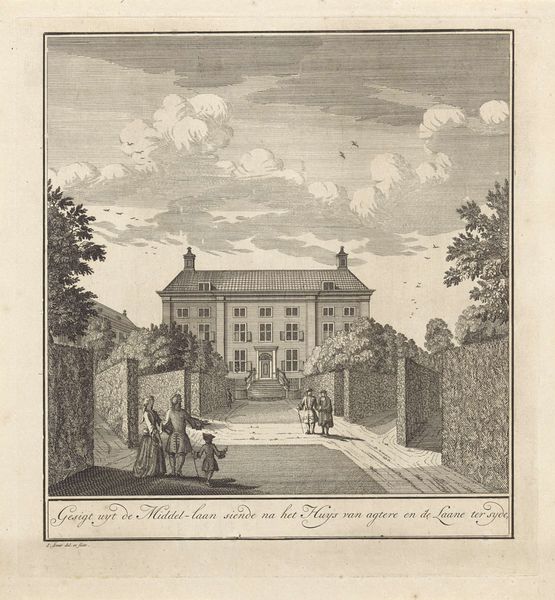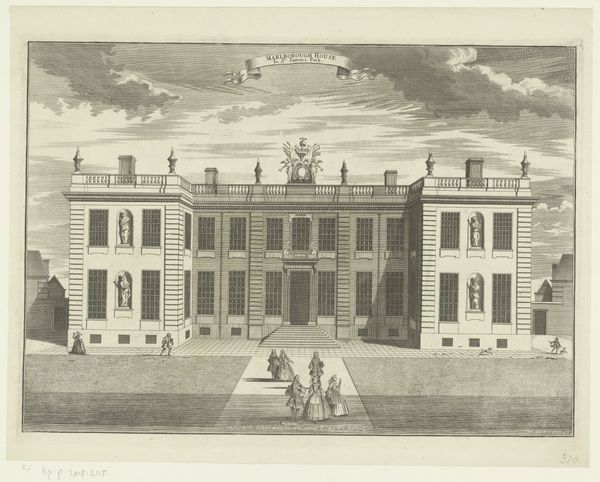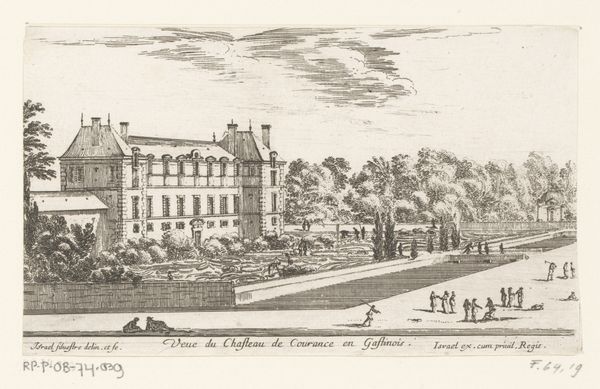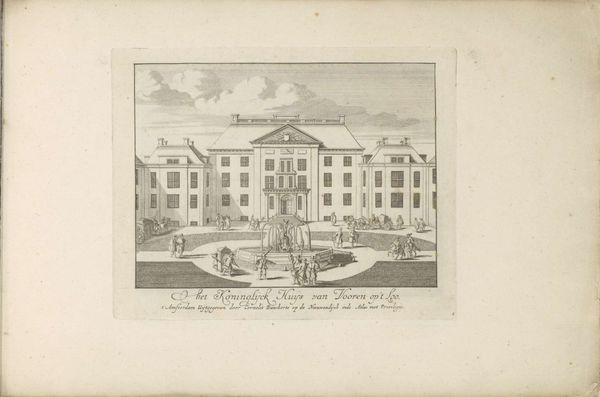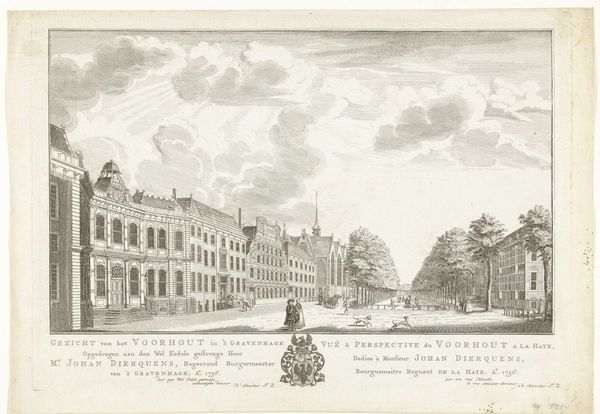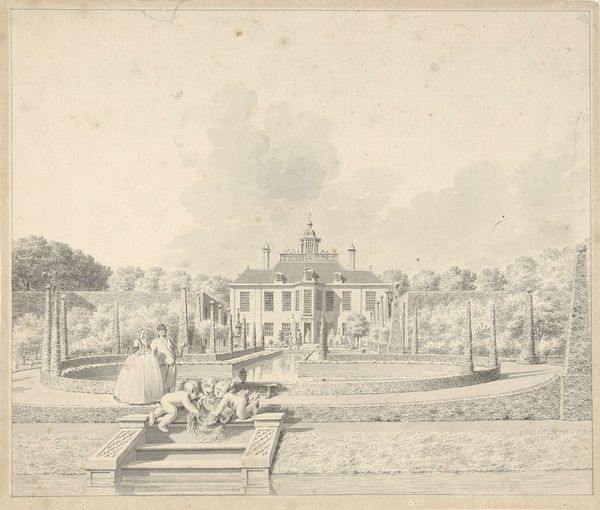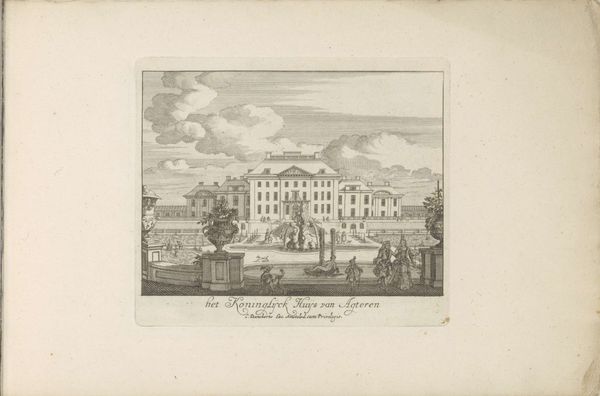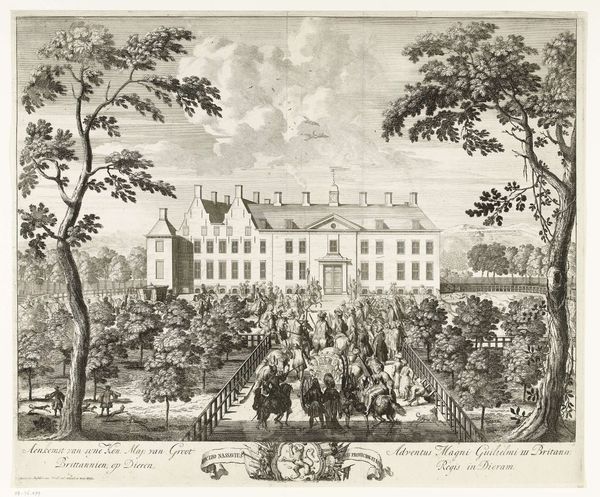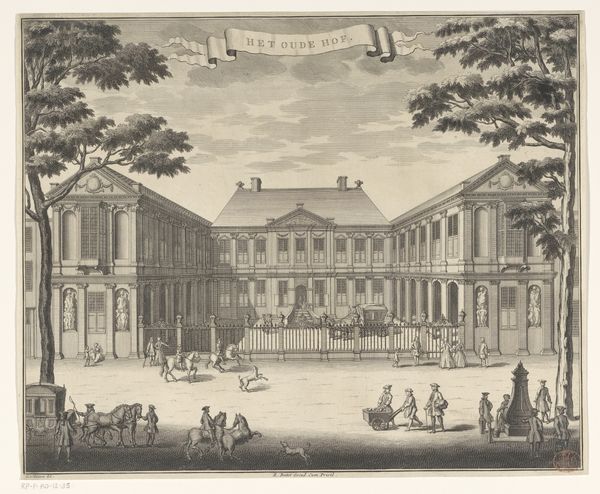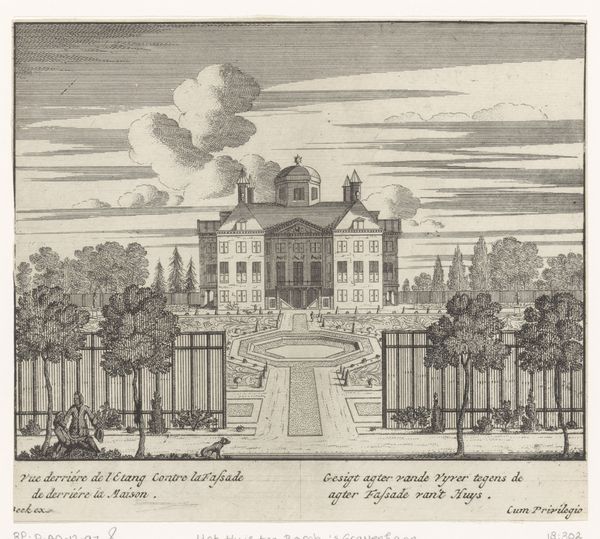
print, etching, engraving, architecture
#
baroque
#
dutch-golden-age
# print
#
etching
#
old engraving style
#
landscape
#
cityscape
#
genre-painting
#
engraving
#
architecture
Dimensions: height 253 mm, width 172 mm
Copyright: Rijks Museum: Open Domain
Editor: This is "Zicht op het Lutherse Diaconie Weeshuis van Amsterdam," an etching and engraving by Jan Goeree, dating sometime between 1680 and 1731. The print has this almost unsettling calm, a peaceful cityscape buzzing with youthful activity, and looming architecture in the backdrop. How should we interpret it? Curator: It’s an intriguing piece to examine through a socio-historical lens. Notice how the composition situates the orphanage not as a marginalized institution, but centrally, almost gloriously, within the cityscape. How do you think this imagery functioned in its time? Was it a demonstration of civic virtue, an assertion of control, or something else entirely? Editor: I suppose it’s both. The presence of children at play creates a feeling of vitality. Curator: Precisely. Genre scenes are used here as a form of political commentary. Consider the role institutions like orphanages played in shaping social structures, and in controlling the poor. Also, what do you think of the absence of parents within this frame? Editor: It’s interesting…It reinforces the idea of institutional care as a solution, maybe? I mean, seeing the children thriving like this sends such a powerful message. Almost like an advertisement. Curator: Exactly! It highlights the public role of such institutions in Dutch society and how such structures impacted family units, class dynamics, and societal values of care versus control. And the artist presents a visual narrative designed to garner public support. Editor: That makes me look at it with totally new eyes. What was previously "peaceful" seems deliberately crafted to normalize this sort of institutional existence. Curator: Indeed. Images, like any form of communication, carry immense political weight, particularly when depicting the vulnerable. What are your closing thoughts about our etching, considering these social angles? Editor: It has a new depth. It shows how crucial it is to examine any work for what it suggests about the society and systems behind it. Thank you!
Comments
No comments
Be the first to comment and join the conversation on the ultimate creative platform.
